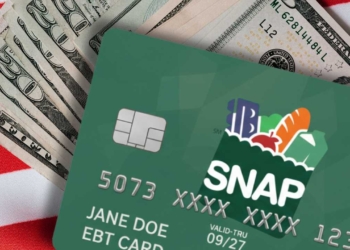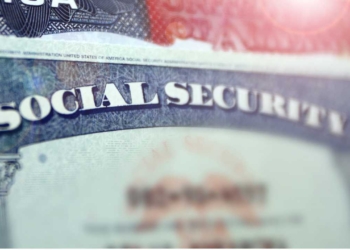Supplemental Security Income (SSI) recipients in the United States can breathe a sigh of relief with a payment schedule that offers a timely boost in the final months of the year. According to the official Social Security Administration (SSA) system, those who receive their deposits on the first of each month will receive an additional payment in October 2025.
Specifically, the November deposit will be moved up to Friday, October 31, since November 1 falls on a Saturday. This allows households to have extra funds to cover daily needs in advance, even though it means there will be no scheduled payment in November, leaving that month without a new deposit but with financial support already in place.
There will be more changes to the SSI benefits payments
This arrangement extends through the end of the year with an added benefit thanks to the 2026 cost-of-living adjustment (COLA). The SSA has announced a 2.8% COLA, which will take effect in January 2026 for most Social Security programs, but SSI beneficiaries will receive it a month earlier, integrated into their December payment.
That deposit will be issued on Monday, December 1, 2025, directly benefiting approximately 8 million people with disabilities or limited incomes. This annual practice helps offset inflation during peak spending periods, such as the holidays, and ensures that financial support arrives at just the right time to maintain stability.
The 2.8% COLA: How much will SSI benefits increase?
In detail, the 2.8% COLA will be reflected in significant increases in the federal SSI maximum amounts from 2025 to 2026. For an individual beneficiary, the maximum monthly payment will increase from $967 to $994, adding $27 per month and providing essential relief from rising food and housing costs.
For eligible couples, the limit will increase from $1,450 to $1,491, adding $41 per household. These calculations, are based on the CPI-W price index, only partially covers pressures in areas such as health and transportation. For more information, beneficiaries can check their my Social Security account online.
How to qualify for SSI in 2026
Starting in fiscal year 2026, there aren’t any major changes to who’s eligible. Basically, if you’re 65 or older, blind according to medical criteria—which are quite specific, such as visual acuity of 20/200 or less in the better eye—or if you’re disabled in a way that prevents you from performing substantial work, and that condition lasts at least 12 months or is terminal, then you’re eligible.
This applies to both adults and children; for the little ones, it’s about severe functional limitations that affect their daily lives. And don’t forget about citizenship: you have to be a U.S. citizen, a national, or a qualified non-citizen, such as a refugee, asylee, or permanent resident who meets certain time-in-the-country requirements.
Income limits to be eligible
Now, what really slows down or accelerates your claim are the numbers in your pocket. For the 2026 tax year, which starts in October 2025, the SSA has adjusted the numbers slightly thanks to the 2.8% COLA, but the resource limits remain firm as ever.
Your countable resources—cash, bank accounts, stocks, or property you can sell quickly—can’t exceed $2,000 if you’re single or head of household with one child, or $3,000 for couples. As for income, things are more nuanced: it includes both what you earn from work and what you receive from other sources,
The sources as understood by the SSA as pensions or family assistance, but there are generous exclusions, such as the first $20 of unearned income and $65 of earned income, plus half of the rest of what you work.
Staying under the accepted treshold
The trick is to keep your countable income below the federal benefit rate, which rises to $994 per month for individuals and $1,491 for couples in 2026. If you’re above that, you can skip the full payment, but you might still qualify for part of it. Oh, and a recent development: starting in late 2024, free food no longer counts as “in-kind support,” so that eases the burden on the calculations a bit.
You must live in one of the 50 states, Washington, D.C., or the Northern Mariana Islands, and you cannot be confined to a public institution for a full month at government expense—although there are exceptions for emergency shelters or community residences. If you’re in jail, everything is paused until you’re released.







